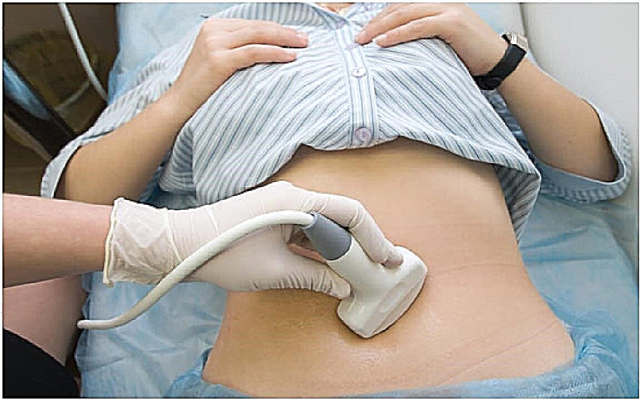
All pregnant women heard that the contractions are long and painful. Therefore, there is nothing surprising in the fact that long before childbirth, a woman begins to think about how to ease contractions. There are several techniques that are a decent and less harmful alternative to medical pain relief. In addition, childbirth can be relatively painless if you learn one of them. We'll cover the best practices in this article.

Why does it hurt?
Why childbirth is accompanied by pain is difficult to say for sure. But many experts are inclined to believe that the matter is not in the uterus, because it itself does not possess special nervous sensitivity. The most probable is the psychogenic mechanism of pain development during childbirth. Fear, stress, insecurity - all this triggers a complex process of activating the pain center in the cerebral cortex. Scientists call this process corticogenic pain.
If the cause of pain is in the head, then it is quite possible to cope with it, supporters of non-drug relief of pain during childbirth believe.
At the physiological level, during contractions, the round muscle - the cervix - opens. This process is quite long, since the neck opens slowly, especially in the first phase of contractions.

Harbingers are irregular contractions that cause almost no pain and are more frightening. At this time, the final preparatory work in the female body is underway - the cervix becomes softer. This will make it easier to unfold. The hormones estrogens and oxytocin begin to be produced, since the contractility of the uterus depends on them. In the cells of the uterus itself, a very special type of protein accumulates - actomyosin, which will give the uterine tissue the opportunity to contract.
Cramping pains in the back, lower back, abdomen begin when the uterus is ready both at the physiological level and at the hormonal level. Labor begins. The painfulness of the process depends on many factors:
- features of the current pregnancy;
- the size of the fetus and the ratio with the size of the mother's pelvis;
- individual perception of pain;
- mood and psychological state of a woman;
- the number of births in the anamnesis - the more there are, the less likely there is a sharp painful pain.

Some techniques can reduce pain, but they certainly do not relieve a woman of them.
To facilitate childbirth, it is important for the expectant mother to know exactly how the painful background of contractions in childbirth develops and changes and what needs to be done in each of these stages.
How do sensations change?
Physiological stages in the development of contractions imply their frequency and intensification. The first contractions are called latent, or hidden. They really can be detected not immediately and not by everyone. The fight is repeated every 30-40 minutes, lasts about 15-20 seconds. Gradually, the stomach becomes more and more stony, and the duration of the contraction increases. This period lasts until the neck is open by 3 centimeters. In primiparas, the period can take up to 10 hours, in multiparous ones - up to 6-8 hours. Towards the end of the period, the woman should come to the hospital.
A guideline for hospitalization is the frequency of contractions every 10-15 minutes.
The cervix continues to open. Opening from 4 to 7 centimeters occurs already during the active phase of contractions. Each of them lasts 40-50 seconds and is repeated every 4-5 minutes. Many people note that at this stage, the stomach hurts quite badly. The period lasts about 2-3 hours for women who have given birth before, and up to 5 hours for women who give birth to their first child.

The most painful and strong contractions are called pushing contractions. Sometimes they, according to women in labor, hurt more than the attempts themselves. Fortunately, they begin almost at the end of labor and do not last long - from 15 to 40 minutes in multiparous and from half an hour to an hour and a half in primiparous. The uterus expands fully up to 10-12 centimeters. After that, the expectant mother feels that she really wants to go to the toilet in a big way. This is the beginning of the labor phase of labor, which will be led by an obstetrician.
In measures of pain relief, women usually need an active phase of contractions and with transient contractions of the uterus that precede attempts. But some complain of pain in the first period - latent. Therefore, all methods of natural pain relief during labor imply not only their use from the very beginning of labor, but also a certain preliminary preparation during pregnancy.

Painless delivery technique
At different times and in different countries, scientists and physiologists, reflexologists, neuropathologists, psychiatrists, gynecologists were puzzled by the issue of relieving pain in childbirth. Shamans and sorcerers from different ancient peoples were able to facilitate a woman's natural task. So, in the Indian tribes of Peru, women gave birth without any outside help, on their own, and after giving birth, they immediately carried the baby to pay for it in a waterfall or reservoir, since this had a certain religious significance. By the way, the mortality rate of mothers and children during childbirth among Peruvians was extremely low.
The best minds of mankind, the luminaries of medicine and natural sciences were interested in amazing techniques of the clans of Indian tribes, ancient Egyptian priests, as well as in the rich historical heritage of other peoples. They developed the key provisions of painless childbirth methods that are used today by modern obstetricians in the preparation of women in labor. Here are some of the techniques.

According to Lamaze
In the 50s of the last century, the French obstetrician-gynecologist Fernand Lamaze paid special attention to the issue of pain relief in childbirth without any medications or medical interventions. The results of his many years of work formed the basis of the technique that he presented to all expectant mothers. To this day, childbirth according to Lamaze is considered the gold standard for natural pain relief of the birth process.
The method is based on increasing the woman's confidence in easy labor that awaits her, as well as on some auxiliary influences in the process of transition from one stage of labor to another. The Lamaze program includes a large list of practices - breathing exercises, which teach correct breathing during contractions, and exercises for muscle relaxation and relaxation between contractions.
Also, a woman is taught meditation, concentration, the basics of anesthetic massage and self-massage. Hot and cold compresses are used, aromatherapy for pain relief. It was Dr. Lamaze who was the first to use the fitball (or as it was then called the "delivery ball").


Also, the doctor who took, it should be noted, as the basis for the development of Soviet scientists and doctors, added the principle of partnership in childbirth to the methodology. He argues that the husband during childbirth should not be a passive observer, he has an important role. The man's task is to help a woman give birth more easily. To do this, part of the postures and exercises, as well as massage techniques, must be mastered together with the pregnant woman and her husband, if it is planned to carry out childbirth according to Lamaze.
The main postulates of the method are the statement that labor pain is not mandatory, and therefore it can be completely avoided if the coordination of the cortical and subcortical parts of the cerebral cortex is coordinated. Every woman has that kind of power, Lamaze believed. It is given to her by nature, you just need to activate certain processes in the brain.
The more a woman first learns about the process of childbirth, the easier it will be for her to apply the technique in practice, the French doctor believed. He was one of the first to start large-scale educational work among pregnant women. According to his method, 99% of home births are carried out worldwide.


The basic rules of this method are as follows.
- Do not stimulate labor or try to speed it up, the natural onset of labor guarantees an easier course of all other stages.
- Do not lie or sit still during pregnancy. The more a woman moves and trains her muscles, the easier it will be for her to endure contractions and attempts. A special yoga for expectant mothers, which includes poses and exercises to train the pelvic muscles, abs, buttocks and back, can be especially useful.
- Do not neglect the help of loved ones. A person who trusts a woman in labor can significantly alleviate her condition with one presence, not to mention help in adopting comfortable postures and performing a massage of the sacral zone.
- Do not use pain relievers.
- Avoid giving birth on your back. This position is only suitable for the obstetrician who is giving birth. In the supine position, the painful sensations of a woman increase many times over. Learn the technique of vertical labor and get the support of a doctor who will deliver.

Many of these advice from Dr. Lamaze are now part of the program of courses for pregnant women, which are organized and operated at every antenatal clinic in the country.
Method of Platonov, Velvovsky, Bekhterev and Lurie
This method is based on a hypnosuggestational influence on a woman in advance of the onset of labor, as well as on the influence of a word during childbirth. The method was developed in the 20s of the last century by a group of Soviet scientists led by K. Platonov, and later supplemented by Lurie.
Since the 30s of the last century in the USSR, the method has been used everywhere - in each antenatal clinic, a corresponding preliminary conversation was held with pregnant women - the installation for childbirth. The psychoprophylactic method of pain relief in childbirth was approved by the Pope as a "humane gift to mankind."
There is evidence that the French doctor Lamaze, mentioned above, fell in love with the works of Soviet scientists so much that he actually copied key statements from them. It should be noted that childbirth under hypnosis enjoyed great success in the USSR - more than 5000 women with high hypnotizability agreed to try the method on themselves and did not regret it.


Today, practicing psychotherapists-hypnologists also work according to the "Childbirth without fear and pain" technique. But in antenatal clinics, such classes are not conducted. A woman who wants to have a positive attitude towards a natural and easy birth should start seeing a hypnologist well in advance, a few months before giving birth.
Most likely, you will have to pay for hypnosis sessions, because this type of assistance to women in labor is not included in the compulsory health insurance program today.
How it works? The preliminary verbal setting, teaching the woman deep relaxation does not allow the cerebral cortex to overexcite with the onset of labor. As a result, there is no pain, there are slight painful sensations that are much easier to endure.


Useful Tips
If teaching individual techniques is not included in the plans of the expectant mother, then some useful tips will help her to help reduce pain during childbirth.
Breathing according to Kobas
Dr. Alexander Kobas has created a whole breathing system during childbirth. He based his method on the works of Soviet scientists, as well as Dr. Lamaze. In fact, he systematized all the data on the breathing of a woman in labor. The principle of action is the natural reduction of pain when the body is saturated with oxygen. Deep and slow or fast and short breathing gives the brain a large amount of oxygen, which stimulates the production of endorphins. These hormones have a marked analgesic effect.
At the beginning of labor, when the contractions have just begun, Kobas recommends breathing deeply and measuredly, slowly. The exhalation should always be longer than the inhalation. This will saturate the body with oxygen, promote relaxation and prevent fetal hypoxia.
When the contractions pass into the active stage, become more protracted, you need to be able to "breathe" the spasm, using short exhalations (like extinguishing a candle, how a locomotive puffs, like a dog breathes). Between contractions, the first type of breathing is recommended - deep and relaxing.


When pushing and in the previous final stage of the longest contractions, it is recommended to use dog-like breathing, and push - holding the breath after a deep breath.
Massage
Circular, arcuate movements in the sacrum area can be done by the woman herself with both hands, or maybe by a partner, if the birth is joint. Massage the zone of the so-called "Michaelis diamond". You can make any movements from the center of the imaginary rhombus in all directions and lines to the sides.
The massage can be done both during contractions and in between uterine spasms.
You can also use some acupressure techniques. Exposure to points on the face, wrists, and lower legs and thighs will help to survive the contractions with the least pain.

Poses
Mindful of Dr. Lamaze and his prohibition on the supine position, try to change postures during contractions. If the hospital has a fitball, use the seat on it, if not, ask for a chair. Leaning on the headboard, on a chair, measured walking around the ward or corridor, postures with support on a standing partner will help make the initial stage of fights easier.
To transfer the second stage - active - is easier in a squatting position with support on a partner, on all fours with a back bend in the lumbar region, with an inclination to the back of a chair, table, headboard.
If the doctors of the chosen maternity hospital do not mind, try to negotiate with them about vertical childbirth, in which the child will not be received lying down, but in a standing position, squatting or other position convenient for the woman in labor.
Medication pain relief
Every woman in labor has the right to count on pain relief from labor with medicines. This is her statutory right. If the techniques are unfamiliar, but it is not possible to intuitively manage her pain, the woman is in a panic, she is in pain, she can ask the obstetrician to give her an injection of an analgesic or to administer epidural anesthesia with one of the analgesics (anesthesia is injected with a long needle into the epidural space of the spine).
Such methods have their drawbacks, because medications affect the child and the force of labor of the woman in labor.
Don't try to drink caraway seed oil, as traditional healers advise. It will not relieve the contraction, but it can cause diarrhea, which will aggravate the condition.

A woman should behave in her own childbirth calmly and confidently. This will make the pain easier to bear. And fear exists only in her mind. He is not in life. Understanding this will relieve pain.
For information on how to make labor and labor easier, see the next video.



